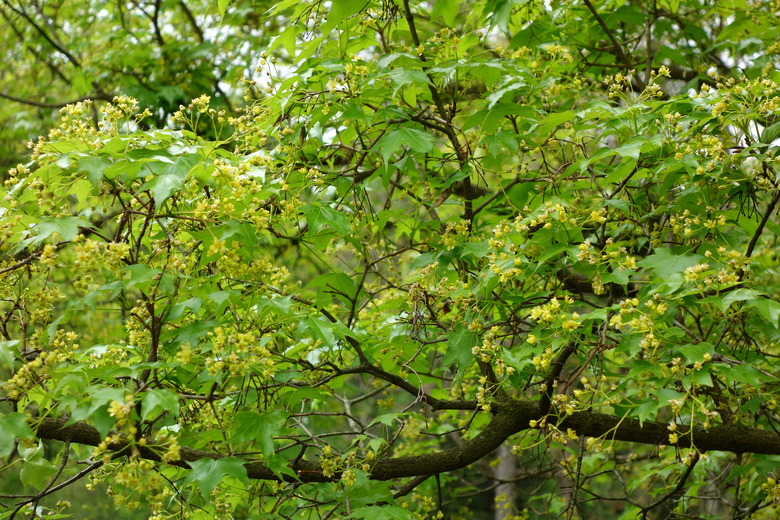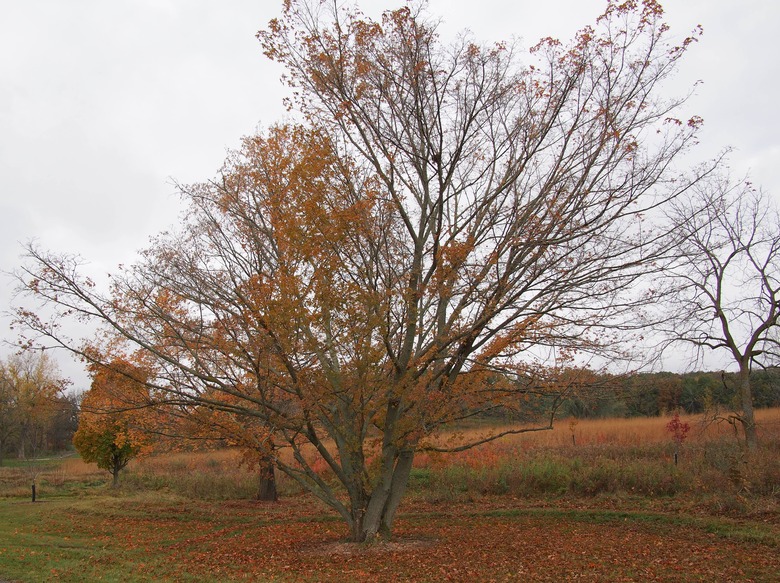A Guide To Shantung Maple Trees In Texas
Even though it's not native to Texas, the shantung maple (Acer truncatum, USDA zones 4 to 8) is a stellar performer across most of the state. This tree offers a trifecta of desirable qualities that make it suitable for most Texas landscapes: drought tolerance, compact size and stunning fall leaf color.
Shantung maples are so adaptable to Texas soils and the challenges of this state's climate that they have even earned the status of a "superstar" tree.
Shantung Maple Is a Texas Superstar Tree
From its native habitat in northern China, the shantung maple tree has found a home in Texas. After 12 years of testing and landscape trials, Texas A&M University designated this tree as a Texas Superstar™ tree in 2001.
Before a plant earns this designation, it must demonstrate superior performance through some fairly tough growing conditions that exist in Texas. During the testing period, plants receive only minimal pre-planting soil preparation, moderate water and no pesticides.
Although Texas certainly has plenty of wide, open spaces and vast landscapes, yards are getting smaller in many urban and suburban areas because of the increasing prices of land. Because of this, many trees are too large for these scaled-down landscapes. The compact shantung maple is size-proportionate for smaller yards, which puts this tree at the top of many Texas homeowners' must-have lists.
Shantung Maple Characteristics
Shantung maples tick many boxes on the list of characteristics that Texans look for when shopping for landscape trees, including:
- **Compact size:** A full-grown shantung maple tree reaches only 20
to 25 feet with a 20-foot spread.
- **Overcoming challenges:** Shantung maples are tolerant of drought, heat and alkaline soils. They're also resistant
to pests and diseases.
- **Brilliant fall leaf color:** Shantung maples make impact statements in autumn when their green leaves transition
through a kaleidoscope of color, starting with yellow that's dotted with red before turning orange and ending in fiery red.
- **New leaf color:** When new leaves emerge, they are
purplish-red before maturing to green. This gives shantung maple another of its common names, purpleblow maple, because of the eye-catching new purple foliage as it blows in the wind.
Shantung Maple Tree Care
**Humidity:** Although the USDA plant hardiness range for shantung maples is across zones 4 through 9, zone 6 is the sweet spot for optimal performance. The Panhandle and the Eastern two-thirds of Texas is where these trees prosper, but they do not grow well in West Texas where the humidity is too low.
**Watering:** Established trees are drought-tolerant, but trees (especially newly transplanted shantung maples) need to be deeply watered during dry periods.
**Fertilizer:** Avoid fertilizing a newly planted tree, waiting instead until the transplant has been established for at least six to eight months on its new site. A soil test determines exact nutrient needs, but in the absence of soil-test recommendations, fertilize a shantung maple in late February with a slow-release fertilizer or organic equivalent. Measure the tree's diameter 12 inches off the ground and use 3 pounds of 19-5-9 fertilizer per inch of trunk diameter.
**Sun Protection:** Young trees need a little protection from sunscald during their first three growing seasons, because the bark is still thin and has not built up its outer corky layer. Cover the trunks of young trees with corrugated plastic trunk guards, commercial paper tree wraps or white fabric trunk wraps. Be sure to use light-colored wraps or guards and loosely cover the trunk instead of tightly binding it.
Shantung Maple Cultivars
Although there are few shantung maple cultivars, two are worthy of note:
- Fire Dragon shantung maple (Acer truncatum 'Fire Dragon'): Keith
Johanssen of Metro Maples in Forth Worth introduced this cultivar to the trade. Displaying the same desirable qualities of the species, Fire Dragon is drought, wind and ice tolerant. It also grows well on alkaline soils. Fall leaf color is red.
- Main Street™ shantung maple (Acer truncatum 'AT-WF-1'): Mike
Worthington of Worthington Farms in Greenville, North Carolina introduced this cultivar. His original specimen grew 20 feet tall in 10 years with absolutely no irrigation, which attests to the drought tolerance of this cultivar. Fall leaf color is orange-red.
References
- Missouri Botanical Garden: Acer truncatum
- Texas A&M AgriLife Extension: Shantung Maple Tree Designated as a Texas Superstar
- Texas A&M AgriLife Extension in Bexar County: Shantung Maple
- Texas Department of Agriculture: Texas Superstar
- Kansas State University: Justin Alan Brock 2013 Thesis for Master of Science: Rooting Stem Cuttings Of Shantung Maple (Acer Truncatum), Mound Layering Shantung And Caddo Sugar Maples (Acer Saccharum), And Using Eastern Redcedar (Juniperus Virginiana) As A Substrate Component In Stem Cutting Propagation

